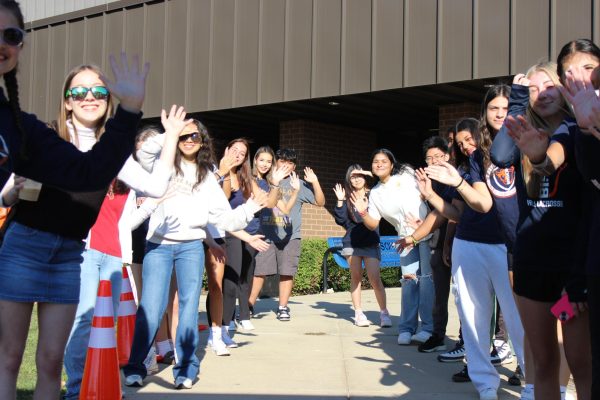TikTok appeals to teenagers with targeted content and realistic perspective
In 2014, Musical.ly launched as a lip-syncing app with the intention of serving as an outlet for young people to express themselves through comedy, dance and music. Although popular among middle schoolers, the app was perceived as a joke by many others
All of this changed in August 2018, when it was purchased by internet company Bytedance and rebranded with a new name: TikTok. Suddenly, it was no longer an app targeted toward merely tweens—TikTok made its way into the daily life of high schoolers, college students and beyond as it expanded in a more creative direction. The newly branded app included text-based features, allowing for interest and humor-based videos as opposed to mere lip-syncing.
“My students use TikTok during class all the time,” family and consumer science teacher Margaret Sheehy said. “I’ve even had them use it for a video project—one group asked if they could do it in TikTok format, and I told them that it was fine as long as it filled the requirements. It worked, and it was really funny.”
The age range of TikTok’s target audience may be broader than its predecessor, but it continues to consist of a younger crowd. According to Business of Apps, around 60% of TikTok users are between ages 16-24, compared to under half of Instagram and Twitter users falling into this age range.
“Teenagers love videos, and I don’t think that appeals to adults as much,” Sheehy said. “It’s a very goofy social media platform, so I feel like that’s why teenagers adapt to it more quickly.”
Many BG students enjoy creating and viewing TikTok videos in their free time, and some have found success on the platform, including sophomores Anika Michaelis and Maddie Das. Michaelis has garnered a following of over 175,000 on her account, @anikamichaeliss, where she posts “random videos and whatever is on her mind.” Das’ 100,000 followers watch her vlogs and lip-sync videos on her account, @voguekween.
“I feel like TikTok is one of those apps that can make anyone famous,” Das said. “There are a lot of components that can make someone more viral than another person, but anyone can get TikTok-famous if a lot of people want to see their face.”
TikTok separates itself from other social media platforms by placing less emphasis on special events and more emphasis on daily life. Many TikTok users’ profiles consist of videos of them spending time alone in their rooms or with close friends at school, as opposed to serving as highlight reels of their lives, Michaelis said.
“I feel like it’s easier for teenagers to use TikTok because there aren’t as many expectations,” she said. “On Instagram, you only see people who seem perfect. On TikTok, I feel like it’s more accepting of real people.”
One primary feature of TikTok is its “For You” page. This page is comprised of content tailored toward each viewer based on his or her past content interactions and the content interactions of similar viewers.
“People can spend hours on their ‘For You’ pages and not even realize it because everything is so interesting,” Das said. “You can relate to almost everything that you see because it’s all geared toward you.”
The targeted content on each “For You” page allows for the emergence of TikTok communities filled with members who can interact, connect and relate with each other. For example, people who are involved with the same club or sport tend to come across content related to that club or sport. People with a similar sense of humor tend to come across content relying on that sense of humor. The app adapts to each viewer’s taste, ensuring that no two users’ experiences are the same.
“There is so much diversity of what you can watch,” Michaelis said. “Everyone can find something that they like on it, and I think that’s what makes it so successful.”





